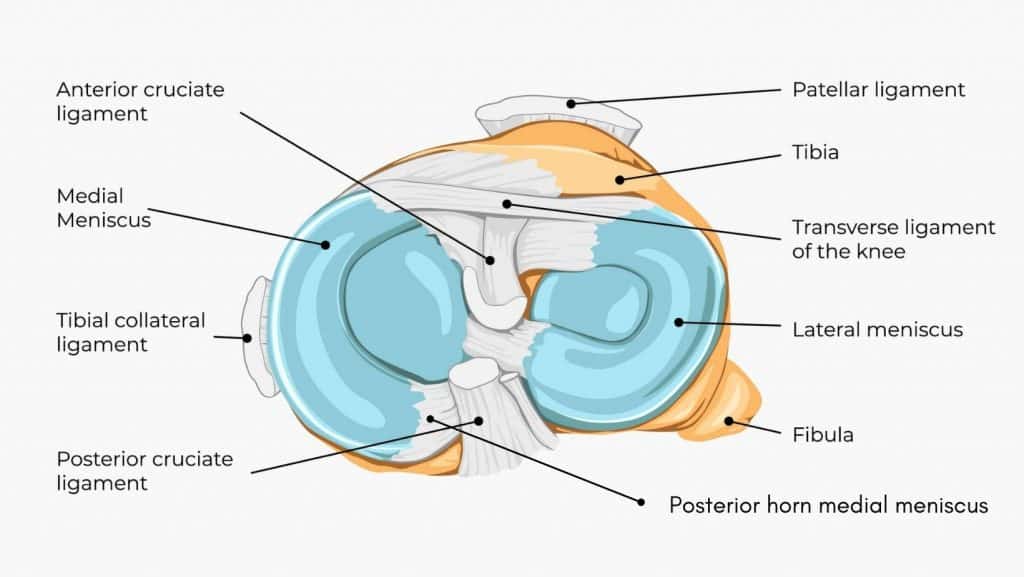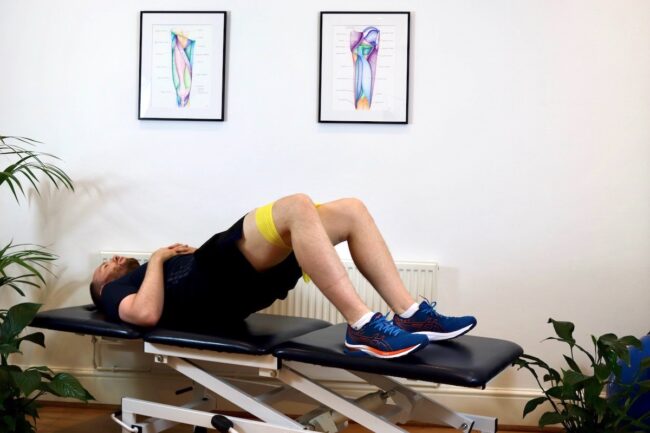Read More >
- Anterior Ankle Impingement - July 24, 2022
- Tarsal Coalition - October 12, 2022
- Sural Nerve Pain - October 3, 2022
What Is A Discoid Meniscus?
A discoid meniscus is a congenital defect that results in a different shape and thickness of the meniscus. A normally shaped meniscus is often described as two ‘C’ shaped fibrocartilage discs that sit within the knee, between the femur and tibia bones. A discoid meniscus does not have the hollowing in the middle but has a filled-in centre, so is more similar to a circular or oval disk.
These menisci are also typically thicker than a normal meniscus. This meniscus shape typically only forms on one half of the meniscus and is more common on the lateral side.

Symptoms Of A Discoid Meniscus
In many cases, a discoid meniscus will go unknown and undiagnosed as no symptoms may be felt. However, commonly, even in the absence of pain, a clicking or popping may be heard or felt on the outside of the knee during movement. A discoid meniscus is sometimes called “popping knee syndrome”, due to the sound that is frequently heard and felt. Occasionally, individuals may feel a non-painful bulge on the outer joint line of their knee.
Due to the unusual shape of the meniscus is more likely to be injured than a normally formed meniscus. Like other meniscus injuries, the symptoms are a restricted range of movement of the knee, especially into full extension. This may be accompanied by pain, swelling, stiffness or a feeling of instability or giving way of the knee.
Read more about meniscus injuries in our related article: Posterior Horn Medial Meniscus Tear, Lateral Meniscus Tear, and Common Meniscus Tears.
How Rare Is Discoid Meniscus?
A discoid meniscus is very rare, with various studies estimating the incidence of a lateral discoid meniscus between 3% and 5% in the general population. There is a higher prevalence in the Asian population of up to 15%. Medial discoid meniscus is far rarer with less than 1% incidence recorded in the general population. Due to so many cases being asymptomatic, it is difficult to be confident in the accuracy of this figures. What is known from the cases studied, is that a discoid meniscus will usually present in one knee, with bilateral discoid meniscus occurring in 15-20% of all cases, and these are far more common in the Asian population (Saavedra et al, 2020).
Classification Of A Discoid Meniscus
Not all discoid menisci are the same, this congenital defect can occur in a spectrum of different shapes (Saavedra et al, 2020). Diagnosis and classification can be done with MRI imaging. On Xray imaging, some signs can be seen such as increased joint space on the lateral part of the joint, squaring of the lateral femoral condyle, and lateral tibial plateux ‘cupping’. These changes are due to the thicker meniscus and because the meniscus has a flatter shape than normal forms.

Here are the 3 classifications of a discoid meniscus:
Type 1
Complete discoid shape.
The full tibial plate is covered.
Type 2
Incomplete discoid shape.
Less than 80% of tibial plate is covered.
Type 3
Slight discoid shape.
Absence of posterior coronal fixation so this type is unstable.
Called the Wrisberg variant as only the Wrisberg ligament is maintained.
Treatment For Discoid Meniscus
As most cases are non-symptomatic no treatment is required. If there is an injury to the meniscus then it may be treated similarly to other meniscus injuries. In the absence of instability, locking and severe pain, conservative management with physical therapy, exercises and activity modification may be all that is needed. However, if the knee is locking, buckling or very painful, or if physical therapy and exercises have been tried for an appropriate period of time, with no benefit, then surgery may be considered. Surgical options include the removal of some of the damaged meniscus, or less commonly the whole meniscus. These full meniscectomy surgeries are less common now, as there can be associated instability following surgery.

Physiotherapy with James McCormack
This is not medical advice. We recommend a consultation with a medical professional such as James McCormack. He offers Online Physiotherapy Appointments for £45.
Related Articles:
Lateral Meniscus Treatment
Medial Meniscus Tear
Knee Brace for Meniscus Tear
